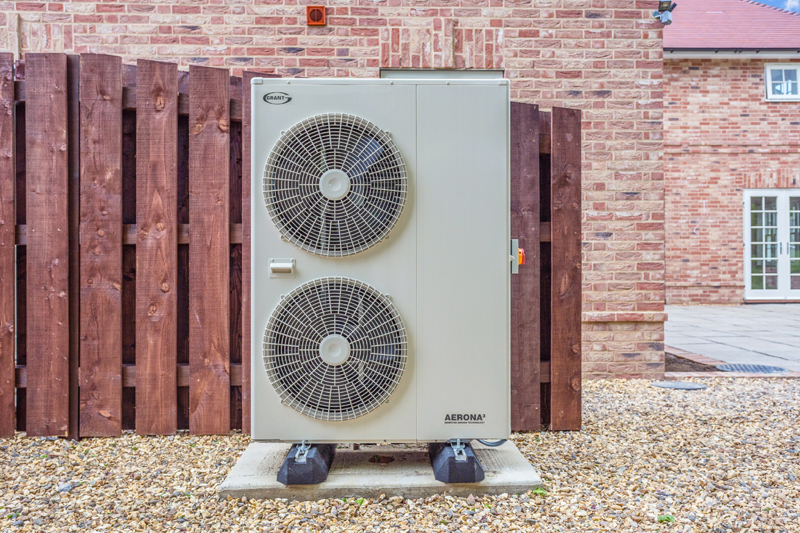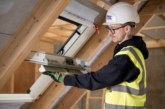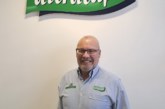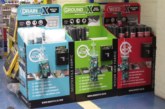
With Net Zero carbon targets firmly on the agenda, John Morris, Renewables Business Development Manager at Grant UK, debunks some of the myths about heat pumps for merchants.
The landscape of the heating sector is set to change as the country moves towards achieving Net Zero. Air source heat pumps will play a pivotal role in the coming years and the increased demand for this renewable technology will present manufactures, merchants and installers with exciting opportunities to grow their businesses.
Recent Government research however has investigated the impact of the transition away from high carbon fossil fuel heating systems on 4,000 heating installers who work in areas of England and Wales that are not connected to the gas grid. It highlights the need for more education and training in the months and years ahead.
As the report points out, those installers who worked in areas with predominantly older housing stock perceived the lack of insulation as a limiting factor in a heat pump’s suitability for these houses. Some installers interviewed also said that heat pumps would not work efficiently during the winter months, despite evidence that heat pumps are able to comfortably operate at or below zero degrees Celsius.
This confirms that there are some myths around heat pumps which do need to be addressed:
Myth 1: Consumer demand for heat pumps is low
There can be no denying that homeowner interest in air source heat pumps is growing. Consumers are becoming increasingly aware of their impact on the environment and are actively looking at ways in which they can reduce their carbon footprint.
The Government’s Clean Growth Strategy is going to shape legislation that will move the market away from fossil fuels, making homeowners transition from high carbon heating systems to greener, more sustainable alternatives.
Myth 2: Heat pumps are only suitable for new builds
Air source heat pumps are an ideal solution for new builds because the necessary energy-efficient measures can be installed during the early phases of a property’s build. However, that is not to say that an air source heat pump is solely suited to new homes — far from it. The Aerona³ heat pump, for example, has been installed into many existing homes, being retrospectively fitted to replace an older heating system.
A retrofit installation may involve the installation of additional roof or wall insulation or other measures to reduce heat loss from the property, but provided the entire system has been properly designed, with correctly sized heat emitters and the most suitable heat pump output, an older home can comfortably go green with an air source heat pump.
Myth 3: Heat pumps do not work efficiently in the winter months
If an air source heat pump has been installed correctly with the appropriate control parameters in place and with the rest of the system correctly set up as well, the unit will operate efficiently all year round. Heat pumps are designed to operate in low temperatures — Grant’s Aerona³ heat pump can operate in conditions as low as -20ºC — and while their SCOPs will not be as efficient when compared to operation in warmer outdoor temperatures, they still operate with good efficiencies.
A heat pump will work considerably more in the winter months compared to the spring and summer, but this should not be mistaken for inefficiency. Between November and February when a home’s heating and hot water demand is at its highest, a heat pump will use an estimated 63% of its annual energy usage so during these months, electricity usage can be expected to increase.
However, this usage will significantly drop during the remaining months of the year when the heat pump’s energy consumption is very low.
Myth 4: Heat pump product training is not essential
It is incredibly important for installers who are not currently installing heat pumps to complete training on this technology before they start working with them. Without suitable product training to give installers a solid understanding of how heat pumps work and what maximises their performance, there is a risk of installations being completed incorrectly which can result in underperforming heat pumps and therefore unsatisfied end-users.
Air source heat pumps are different to install compared to a conventional boiler — a heat pump installation will not be a ‘like for like’ replacement installation and, as previously mentioned, thorough design preparation is needed.
Help for merchants
There is support in place for merchants and their customers to help them prepare for and manage the uptake in demand for heat pumps. Grant UK, for instance, offers online training to merchants through its eLearning Academy — home to a selection of free, on-demand courses and training resources to help merchant teams develop their knowledge of renewable heating systems.
Merchant staff can sign up for free by visiting www.grantelearning.com and entering the enrollment code GMERCH1120.
Through both the national and independent merchant networks, Grant UK also supplies quick recovery hot water cylinders and various heat emitter options like underfloor heating and aluminum radiators alongside air source heat pumps, so that customers can turn to one manufacturer for a complete heating package.
Furthermore, the company’s Sales Team — which includes Area Sales Managers, Renewables Business Development Managers and Technical Support — is on hand to deliver in-branch training as well as on-site visits to provide quick-step estimates.
Heat pump technology looks set to be a key part of heating and plumbing merchants’ offering over the coming years and with training, design assistance and highly efficient products available, merchants are well positioned to capitalise on that growth.
For more information, visit www.grantuk.com/professional/training
Combatting a further myth, Grant UK has published a new video on its YouTube Channel which shows homeowners how quiet air source heat pumps are. The video features an Aerona³ heat pump in operation, showing its sound levels and providing comparative sounds of other common household appliances.
The short video features footage of the Quiet Mark-approved Aerona³ 13kW air source heat pump working, providing audiences with the sound levels of the unit both close up and further away.
Click the link below to watch the video:
A version of this article appeared in PBM’s December edition. Click the link to see the digital version of the full issue.,









